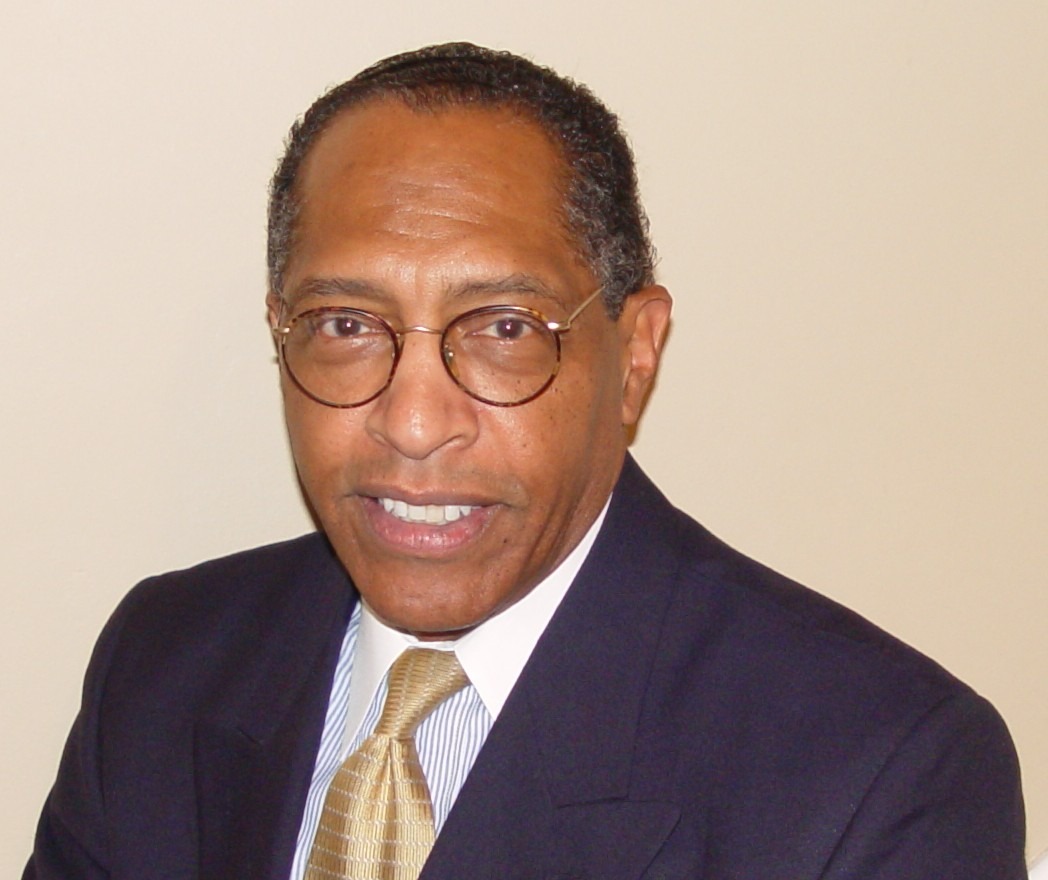A venerated communicator shares hard-won wisdom from a remarkable career
Peter Woolfolk drops his best tips on media relations, crisis comms and delivering meaningful messages amid turmoil.

When it comes to comms, Peter Woolfolk has done it all.
Before founding Communications Strategies in 2004, Woolfolk served as a Clinton White House appointee in the U.S. Department of Education and as a press secretary for three members of Congress. He’s been a comms and PR VP for a university, a radio (and now podcast) host and producer, a columnist and a public speaker. He was the “voice” of Nashville Airport. Oh, he’s also an accomplished tennis player and a licensed private pilot.
He’s the kind of person you want to seek out for career advice—and probably just for life wisdom in general. We asked him to give his best tips for helping communicators blaze a successful career path. Here’s what he had to say.
Media relations insights from an industry icon
Regardless of your specific communication focus, Woolfolk touts the importance of nurturing genuine relationships with those who cover your industry. Building relationships—and anticipating needs—are still the name of the game for media relations.

Peter Woolfolk
“My very first tip for media relations success is, when possible, develop a relationship with the reporter—before you ask for something,” he says.
It’s fine to proactively introduce yourself and to clarify how you might be of service, but always be brief. “You might also inquire about their deadlines, a preferred method of receiving information and more specifics on their beat.”
Do not pitch stories outside their beat or purview, Woolfolk says, and “do not waste their time.”
Woolfolk also says that bonus points go to those who share supplementary news and views journalists can use. Provide complementary artwork, quotes and data, and distill the gist of your findings into tidy bullet points. Saving the reporter time and effort is an easy way to secure a spot on the “good PR person” list.
“When I was a press secretary in Congress, I learned early that you should be prepared to provide supporting data, graphs, photos, video and any support staff who were actually involved in the matter.“
Also, just as with public speaking, “I don’t know” is an acceptable answer. If you don’t have immediate answers or if you can’t respond straight away, “let the reporter know you will track the information down and get it to them ASAP,” Woolfolk says.
Genuine relationships built on mutual trust can be nurtured if reporters know they can depend on you to deliver helpful, useful material in a timely manner, he says. “Helping a reporter to produce a good story keeps you in their good graces.”
Of course, even longstanding relationships can sour due to a flurry of irrelevant pitches. Woolfolk advises you holster the “news” about your “client winning a ‘Person of the Year’ from their district high school or being captain of the company cornhole team.”
How to address divisive political issues and incendiary events
When asked how companies and communicators should respond (or not) to hot-button issues of the day, Woolfolk cites his guiding principle: “Do the right thing for the right reason.”
He points out that just 8% of PR practitioners are Black—with even fewer people of color holding executive-level positions in the industry—which makes it difficult for companies to respond to social justice concerns in meaningful, authentic ways.
That’s not an excuse to remain silent, however. Woolfolk points out Pew research, which found that “52% of U.S. adults say it is very or somewhat important that companies and organizations make public statements about substantive political, social issues and injustices.”
Woolfolk believes—despite the feverish lunacy on Twitter or Facebook—that most Americans gravitate toward the center of the political spectrum. But your decision to pipe up regarding current events should take into consideration the beliefs, passions and preferences of your specific audience (and workforce).
Woolfolk offers questions to ask before issuing a statement:
- Does this protest rise to the level that deserves a response?
- Does it impact our market?
- Are our employees impacted in some manner?
- Are the groups protesting reputable?
- Is the issue being protested one that embraces a very small group or an obscure issue?
This issue highlights the crucial importance of inclusive listening, pulse surveys and simply being able to “read the room.” Employees and customers alike can smell phony, pandering, box-ticking copy a mile away. Unless you plan to back up your words with substantive action, you might be better off sitting out the latest firestorm.
Woolfolk reminds communicators to consistently convey what your company stands for to reinforce trust and credibility. He says:
“Companies and communicators, hopefully, have clearly and publicly articulated their core values and what they stand for to all employees. They validate those values in-house and publicly through civic activities, business presentations, civic actions, community programs and staff appreciation.”
And he says to clearly, unequivocally speak up against injustice:
“Companies having demonstrated their commitment to lawful exercise of constitutional and human rights should not feel hesitant issuing general statements condemning unlawful actions. However, I would urge that they not be specific in listing or stereotyping particular groups or individuals. Leaders are expected to and respected for issuing statements on actions that lend damage to our national norms.”
Crisis communication guidance
If the past year has taught us anything, it’s to prepare for the unexpected. Woolfolk offers this advice to make sure your company can withstand the next crisis, whatever that might be:
- Leadership should convene a meeting of all departments for the specific purpose of examining “what could possibly go wrong in my department” to then develop its overall crisis communication plan.
- Prior to the all-staff meeting, each department should meet with all its employees to discuss in detail what equipment, systems, programs, staffing and anything else that could possibly derail this department from its expected functions.
- Then list the departmental/company range of systemic disruptions these failures would cause, such as: Who will correct these disruptions? Who will send out notifications? How will each department function during these disruptions?
- Advance planning is essential, Woolfolk says, because “trying to delegate assignments during an emergency is risky with far too many unknowns, miscommunications, misunderstandings and associated pitfalls.”
After taking these steps, leadership can begin producing a companywide crisis communications plan. Woolfolk says the draft final should be “tested” to reveal any flaws with corrections made as needed. Then, “the written, tested plan should be distributed—with all assignments clearly articulated—to all appropriate persons in each department.”
Your plan should include all procedures, safety guidance, and essential internal and external contacts, Woolfolk says, adding that savvy organizations should review their plans semi-annually—including a yearly “emergency” test to ensure everyone’s ready for the next big shakeup.
Career skills to hone
Woolfolk advises young communicators to shore up these skills:
1. Develop public speaking aptitude. Leaders must be willing to stand up in front of colleagues and speak with confidence, Woolfolk says. “Being comfortable delivering your message enhances the respect people will have for you, and it certainly lifts your self-confidence, too.”
2. Get off the phone, and interact with people. Woolfolk advises going beyond surface-level chats or emails to prioritize relationship-building face-to-face interactions.
3. Be confident. You must be willing to go out on a limb and give it a try. Woolfolk says to cultivate a “can do” spirit, and to be the person who takes the lead to a get a project completed.
4. Don’t fear failure. You can’t live your life in fear of making a mistake, Woolfolk says. He notes that some mistakes are excellent learning experiences that end up fueling growth, character and fortitude.
5. Be a team player. If you want to thrive in the world communication or PR, you must be willing to work with multitudes of different people. Not all of whom will be pleasant. “Not functioning well in the team environment is a major indication of a short future within that organization,” Woolfolk says.
6. Learn video production. Don’t “overthink” this skill, Woolfolk says. “Start with the basic video software that comes with Microsoft programs or other free programs on the internet,” to learn the basics.
Make good use of free editing software, too, and take time to gain skills from YouTube tutorials. You don’t have to become an expert; just being willing to shoot and edit basic video can make you indispensable. “The more skills you have enhances your value to the organization,” Woolfolk says.
7. Master specific social media bells and whistles. Woolfolk offers examples:
- Can you do live Facebook video transmissions?
- Are you capable of managing large video conference calls or presentations?
- Can you produce a live PowerPoint presentation that allows the local audience to submit questions via mobile phone to the presenter?
- Do you have the skills to produce an interstate video television interview for your CEO with video B-roll?
It’s OK if you don’t know how to do any of these things currently. You just need the willingness to try and learn.
8. Gain podcasting experience. A company podcast enables you to control the narrative, reach new audiences and promote your culture. Of course, someone has to handle the “tech stuff” to make it happen. Why not you?
As Woolfolk says, success awaits those who are willing to raise their hand, step out on a limb, and try something new.







